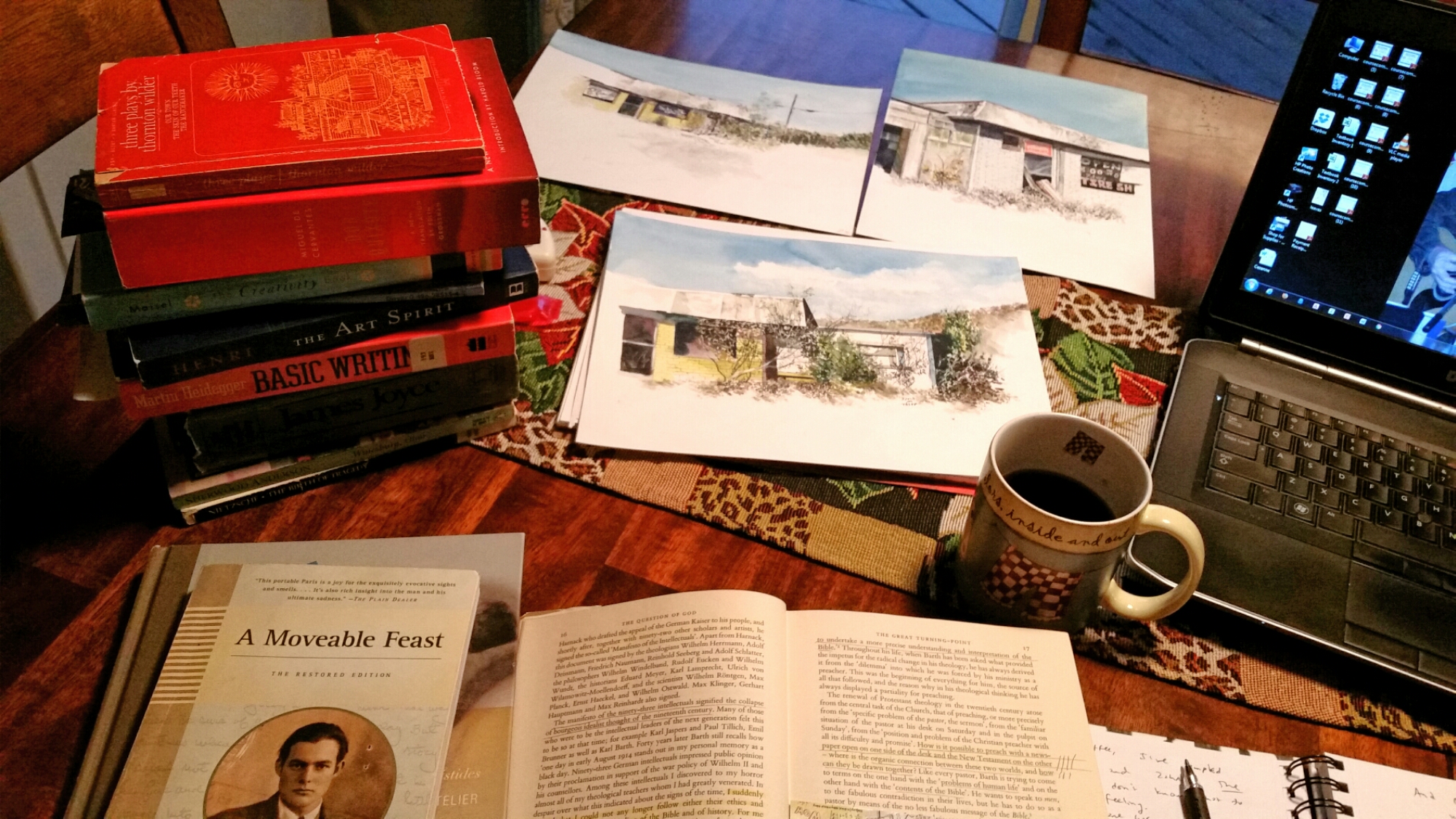
Caprock Canyon. Quitaque, Texas
Saturday does not find me in The Gallery at Redlands, or anywhere in Palestine. Sickness knocked me down several days ago, and I am thankfully climbing out of it, though still in bed this morning with much happier thoughts of late. Reading from my old journals led me to pull some photos from the file and repost something I scribbled out in the journal with genuine gratitude:
5:56 a.m. Tuesday morning, March 13, 2018
Yesterday we journeyed 2 hours to the canyon, taking the dog. At Quitaque, we found a cool Mobil gas station. Population 411 in Brisco County.
We journeyed to Caprock Canyon State Park, saw plenty of bison & mule deer, and I got in some painting. Amazing colors, there. Sandi took a picture of me at my easel. As I painted, she & Patches walked a trail. We may go back there to camp.
I’ll try to record what happened as I painted. Drinking in the horizon, I spread water across the sky & quickly spread Cerulean & Antwerp Blue in a light wash. The climate dried it rapidly. With a Mirado Classic pencil I laid in 2 or 3 action lines to follow the horizon & diverging terrain, accenting 2 or 3 bluffs, then went to wok, dotting the horizon with my modified “ugly” brush (one I cut with an X-acto knife, creating a ragged edge of bristle for foliage). Mostly I blended Alizarin Crimson with Winsor Green & a touch of Transparent Yellow to get a near-black silhouette of horizon tree line. Then I worked my way down the canyon ridge, laying wet wash of Cadmium Red & Transparent Yellow & dried patches of Quinacridone Gold & Winsor Blue for some varied green earth tones. When it suited me, I drew with my pencil into the wet washes to cut the lines of striations in the rock. When dry, I mixed a Winsor Green/Alizarin Crimson to create black & used a liner brush for sharp shadows & creases of rock striations. I also scumbled varying washes of reds & oranges over the bluffs, then laid in Winsor Violet & Transparent Yellow for deep shadows behind the red bluffs.
It was a rewarding time, drinking in the dynamics of the shadowed canyon walls I viewed from a distance. I want to go back when I can stay longer . . .
Now . . . Heidegger!
“To be old means: to stop in time at that place where the unique thought of a thought train has swung into its joint.”
Now, at age 63, with only twice-a-week classes to teach, my thoughts are able to slow down & subjects are given time to swing into alignment. It’s because I no longer have to submit papers by a deadline or prepare multiple subjects to teach. There is time to stop and ponder, ruminate, drink it in. Chew on it. Return to it. Re-examine it. Re-word it. Re-arrange the categories.
The logos gathers together. It is the ligature, the religion, that soothes me, mends me, calms me.
Yesterday the strife was there, as I met the earth with my world, and sought to make art emerge from that nexus, that arena of conflict. And as I wrestled with the horizon, I felt that I was living out my purpose, doing what I had prepared 63 years to do. Stand there at Ithaca, and embrace my home. . . . I was home on this earth.
The child is indeed father to the man. As a child, I saw myself standing, surveying the landscape, and capturing it on a flat plane. My eye penetrating, my hand moving, my thoughts flowing, and the world and I belonged together.
I could have just as easily been flyfishing in a moving stream, my eyes surveying the surface, looking for the seams that held the waters together. Finding the seams. The ligatures. The connections where parts are joined together to form harmonies.
Harmonious searching. Wanting all of it to fit together. Now I return to my landscape, seeking a composition, a framwork, an armature. What is it that makes the eye wish to look further?
I do not echo the sentiments of Wordsworth. At 63 I still know the splendor of childhood and feel more awake and alive than ever before. It is just that I am slower and (I hope) calmer in these years.
Thanks for reading. I’m grateful for this morning’s opportunity to re-read my old journals. I recall well the experience of plein air painting in Caprock Canyon State Park. I just don’t remember scribbling all this out in my journal! I’m glad I did.








